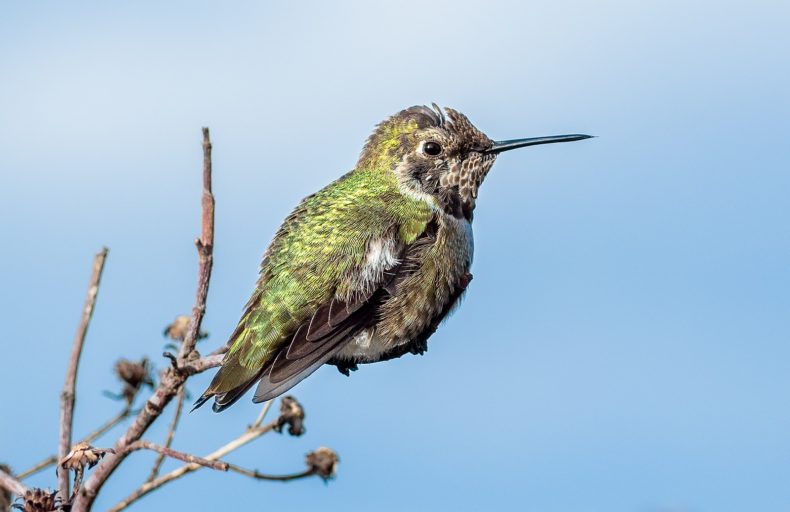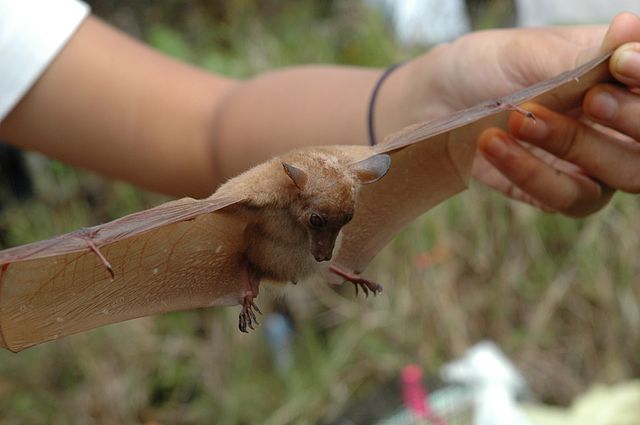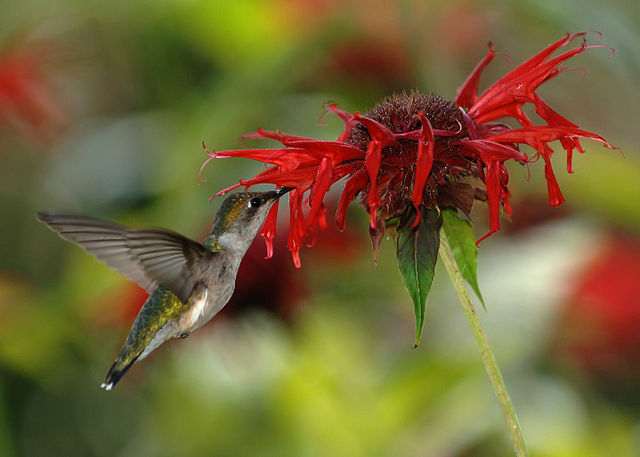
As the days get colder and darker, and the escalating pandemic keeps me homebound, I’m trying to make the most of what I can see through my windows. Last week I bought a beautiful vintage hummingbird feeder made from a blood-red glass bottle with fluted sides. I filled it with sugar water and hung it on my back porch, where I can see it from my desk. Within minutes, a hungry Anna’s hummingbird arrived, flashing emerald wings and a ruby gorget.
The hummingbird is now my main entertainment during the workday, and a source of tortured fascination for Calliope, our strictly indoor cat. Calliope’s jaws chatter and her striped tail twitches as she watches the bird whizz to and fro, dipping its long bill into the feeder’s flower-shaped divots.
A hummingbird’s metabolism is so high—roughly 77 times that of an average person—that it needs to eat every 10-15 minutes. This particular bird arrives hungry, at dawn, when there’s still frost on the ground, and keeps coming back for snacks throughout the day until it’s dark. (Following the Audubon Society’s directions, I’ve started bringing the feeder inside to make sure I don’t give the bird what I imagine to be the equivalent of a bad ice cream headache.)
As I write this, I imagine the hummingbird settling down somewhere for the evening, hopefully sheltered from the rain in a nearby oak or manzanita bush. I have no idea where hummingbirds sleep (I’ve seen adorable photos of them sleeping upside down, like bats?) but I do know that in order to avoid starving while it sleeps, the hummingbird will fall into a state of torpor, its heart rate plummeting from around 1000 beats per minute to roughly 50. It will also cool down its body to save energy. In the Andes, a recent study found, a black metaltail hummingbird’s body temperature plummets to near-freezing, colder than any other non-hibernating animal.
I feel like I’ve been in hibernation during the pandemic too, though I can’t honestly tell what I’m storing my energy for. Today I grabbed a stack of Oreos, scraped the icing off each wafer, ate the wafers, then resumed staring out the window, watching for the hummingbird. Too much sugar is bad for humans, especially humans who spend eight hours a day sitting, but I am living vicariously through the hummingbird, one of two groups of flying animals that have evolved mechanisms of rapidly converting sugar into in-flight fuel. (The other group, nectar bats, also hovers in place above flowers, an energetically costly activity.)

Hummingbirds may look delicate, but their proportions are actually quite hulky. Their pectoral muscles, for example, are enormous relative to their body mass; they also have mighty lungs, and big hearts. These enhancements pay off in cardiovascular fitness: When a bird is flying, every gram of hummingbird muscle uses 10 times the amount of oxygen than the same amount of muscle uses in a human athlete. Hummingbirds also make marvelously efficient use of their fat reserves: To make the roughly 500-mile migration across the Gulf of Mexico, for example, the ruby-throated hummingbird uses about a gram of fat to fuel the journey, the same amount a human would need to climb 50 feet.

I suppose I shouldn’t be surprised that in addition to being beautiful and athletic, hummingbirds also show signs of being clever. There’s some evidence that they can count flowers in the wild, for example, keeping track of which blooms hold the most nectar. Combined with their recently-discovered ability to fly through waterfalls and sing with their tail feathers, it’s enough to rouse me from my own, pandemic-induced torpor—or at least to keep me feeding the birds.
Loved this, thank you
Thanks for reading it Christopher!
https://markgchurchill.blogspot.com/2015/04/the-impoverished-crown-jewels-of-desert.html
So pleased you can share your athletic avian distractions with us!